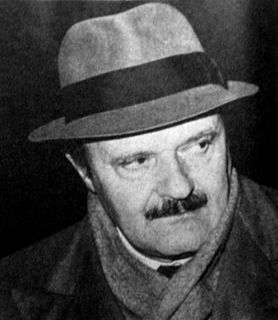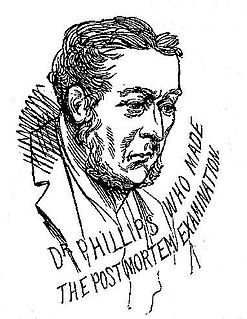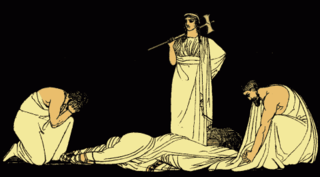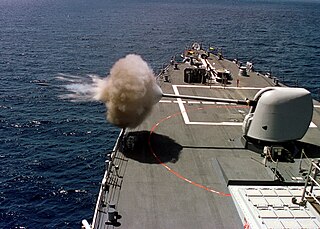
Roberto Calvi was an Italian banker dubbed "God's Banker" by the press because of his close association with the Holy See. A native of Milan, Calvi was Chairman of Banco Ambrosiano, which collapsed in one of modern Italy's biggest political scandals.
Terence Ellis "Terry" Lloyd was an English television journalist who reported extensively from the Middle East. He was killed by the U.S. military while covering the 2003 invasion of Iraq for ITN. An inquest jury in the United Kingdom before Assistant Deputy Coroner Andrew Walker returned a verdict of unlawful killing on 13 October 2006 following an eight-day hearing.

The murder of Vera Page is a British unsolved child murder case from the early 1930s. On 14 December 1931, 10-year-old Vera Page was reported missing after she failed to return to her Notting Hill home from a visit to a nearby relative. The child's body was found two days later in undergrowth in nearby Addison Road. She had been raped, then manually strangled to death in a murder described by one detective as "the most terrible in which I had to deal with during my career".

Johnny Gilbert was an Australian bushranger shot dead by the police at the age of 23 near Binalong, New South Wales on 13 May 1865.
In English law, unlawful killing is a verdict that can be returned by an inquest in England and Wales when someone has been killed by one or several unknown persons. The verdict means that the killing was done without lawful excuse and in breach of criminal law. This includes murder, manslaughter, infanticide and causing death by dangerous driving. A verdict of unlawful killing generally leads to a police investigation, with the aim of gathering sufficient evidence to identify, charge and prosecute those responsible.
Richard Whittington-Egan was a Liverpool-born writer and criminologist, the author of Liverpool Colonnade and Liverpool Roundabout, two colourful chronicles of Liverpool's historical characters, crimes and mysteries. A leading author on true crime over a long period of time, he is acknowledged also as an expert on Jack the Ripper.
The open verdict is an option open to a coroner's jury at an inquest in the legal system of England and Wales. The verdict means the jury confirms the death is suspicious, but is unable to reach any other verdicts open to them. Mortality studies consider it likely that the majority of open verdicts are recorded in cases of suicide where the intent of the deceased could not be proved, although the verdict is recorded in many other circumstances.

The Green Bicycle Case was a murder investigation and subsequent trial pertaining to the fatal shooting of a young woman named Bella Wright near the Leicestershire village of Little Stretton on 5 July 1919. Wright was killed by a single bullet wound to the face, and on the evening of her death, she had been seen cycling in the company of an unknown man riding a green bicycle.

Dr George Bagster Phillips MBBS, MRCS Eng, L.M., LSA, was, from 1865, the Police Surgeon for the Metropolitan Police's 'H' Division, which covered London's Whitechapel district. He came to prominence during the murders of Jack the Ripper when he conducted or attended autopsies on the bodies of four of the victims, namely Annie Chapman, Elizabeth Stride, Catherine Eddowes and Mary Jane Kelly. He was called by the police to the murder scenes of three of them: Chapman, Stride and Kelly.

The Whitechapel murders were committed in or near the impoverished Whitechapel district in the East End of London between 3 April 1888 and 13 February 1891. At various points some or all of these eleven unsolved murders of women have been ascribed to the notorious unidentified serial killer known as Jack the Ripper.
Gareth Wyn Williams was a Welsh mathematician and employee of GCHQ seconded to the Secret Intelligence Service who was found dead in suspicious circumstances at a Security Service safe house flat in Pimlico, London, on 23 August 2010. The inquest found that his death was "unnatural and likely to have been criminally mediated." A subsequent Metropolitan Police re-investigation concluded that Williams's death was "probably an accident". It is also suspected that he should be numbered amongst those who have been killed by Russian assassins on British soil. Two senior British police sources have said some of Williams's work was focused on Russia – and one confirmed reports that he had been helping the NSA trace international money-laundering routes that are used by organised crime groups including Moscow-based mafia cells.

Prince of Wales Drive is located in Battersea, in the London borough of Wandsworth. The drive is situated on the southern perimeter of Battersea Park.

Mark Duggan, a 29-year-old British man, was shot and fatally wounded by police in Tottenham, North London, England, on 4 August 2011. The Metropolitan Police stated that officers were attempting to arrest Duggan on suspicion of planning an attack, and that he was in possession of a handgun. Duggan died from a gunshot wound to the chest. The circumstances of Duggan's death resulted in public protests in Tottenham, which led to conflict with police and escalated into riots across London and other English cities.
Jacqueline Mary Thomas was a 15-year-old biscuit factory worker from Alum Rock, Birmingham, England who was sexually assaulted and strangled after disappearing on 18 August 1961. Her body was discovered a week later close to her home, and the murder sparked a manhunt involving several hundred police officers. A suspect was identified at the time, but there was insufficient evidence to charge him, and the crime remained unsolved for over four decades until a cold case review in the 2000s. In 2007, 70-year-old Anthony Hall – already serving a life sentence for the murder of another teenager – was charged with Thomas's murder. However, a judge subsequently ruled the charge should be stayed owing to the length of time that had passed since the incident. Hall subsequently died in prison.
The Family Court of Australia attacks were a series of shootings and bombings in New South Wales, Australia from 1980 to 1985. They were targeted at judges, and other people, associated with the Family Court of Australia. In the attacks two people were shot dead, two killed by bombs, a court building was damaged by a bomb, and another bomb was found attached to a motor vehicle. In late July 2015 a man was arrested and charged over the attacks.
The Thames Torso Murders of 1887–1889, often called the Thames Mysteries or the Embankment Murders, was a series of unsolved murders that took place in London. The series included four incidents which were filed as belonging to the same series. None of the cases were solved, and only one of the four victims were identified. Speculations have linked the Thames murder series to that of the contemporary Jack the Ripper series.
The Battersea Mystery is the name given to two unsolved murders that took place in London in 1873-74.
Gerald Thomas Archer (1932 –1995) was a Canadian serial killer who was active in and around his hometown of London, Ontario from January 1969 to January 1971. Since all three of his confirmed victims were female hotel employees, he became known as "The London Chambermaid Slayer."
Athelstan Braxton Hicks was a Coroner in London and Surrey for two decades at the end of the 19th century. He was given the nickname "The Children's Coroner" for his conscientiousness in investigating the suspicious deaths of children, and especially Baby farming and the dangers of child life insurance. He would later publish a study on infanticide.















